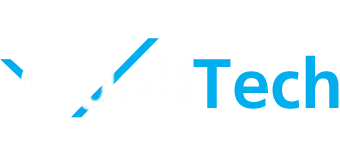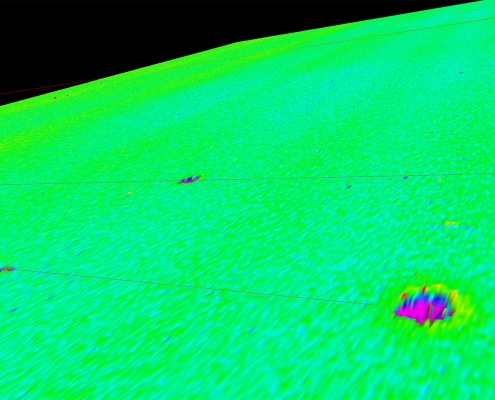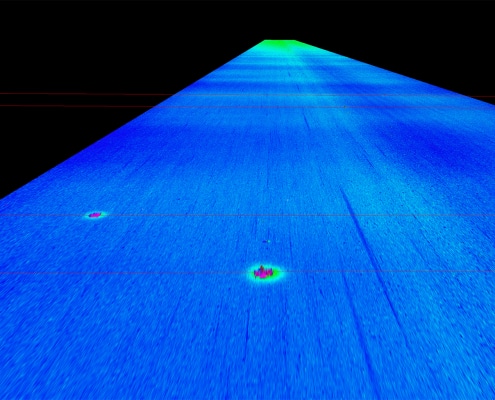Non-contact surface inspection on metal surfaces with turnkey solutions
Non-contact surface inspection on metal surfaces is about objectively measuring and evaluating the quality of the surface of metal sheets and rolls. Traditionally, the quality is checked manually by the human eye and special lamps, but this only allows a qualitative statement. An objective 3D surface measurement, on the other hand, allows a quantitative statement about the number and size of surface defects on a surface.
Why is surface texture detection so important for metal sheet and roll?
Accurate detection of the surface condition of metal sheets and rolls is of great importance, as irregularities can transfer to the final product such as:
- Rolls in paper production, defects of the surface affect the quality of the paper produced.
- In the case of flat sheets of stainless steel, such as those used in the visible area of kitchens and household appliances, surface flaws are immediately visible.
The production of metal rolls requires a high surface quality and concentricity, as they are often used in production lines for web material (paper production). Therefore, the quality of the roll surface also significantly influences the quality of the web materials produced. A roll surface free of defects is therefore essential.
Use of high precision rollers in the industry:
- Calander rolls and smoothing rolls in the rubber and plastics industry.
- Profile rolling in the steel industry.
- CFRP rollers in the printing industry.
- Embossing rollers for the food industry.
Which surface defects need to be inspected in quality assurance?
The following surface defects must be identified on rolls for web material and flat sheets: Cavities, scratches, dents and bulges.
To achieve a low surface roughness and a high-gloss effect, the rolls are partially reworked. Since these surface defects are often in the range of 0.5 mm or smaller, manual detection with the naked eye is almost impossible.
If these surface defects are only discovered by the end customer in production, a time-consuming and cost-intensive reworking process must be initiated in the manufacturing plants. The production of large rolls with a diameter of about 2 m and a length of up to 10 m is very costly, and removal and installation can be difficult. Transportation costs alone can be in the five-digit range. Automated inline 3D quality control can significantly reduce these high time and financial costs in roll production in quality assurance.
Advantages of laser triangulation in surface inspection – a case study
A case study from project practice shows the advantages of surface inspection with laser triangulation. A customer producing rolls for the paper industry wanted to retrofit his cylindrical grinding machine with an inline surface inspection. The inspection time had to be less than 60 minutes and provide robust and complete detection of surface characteristics. Laser triangulation was able to meet these requirements and also enabled easy location of defects downstream. Laser triangulation thus saved time and costs in quality assurance.
QuellTech solution for surface inspection of metal rolls
QuellTech has developed a solution to detect surface defects on metal rolls. A high-resolution Q6 laser line scanner with a resolution of up to 3 µm is used. The scanner with 4096 pixels/profile and a high scan rate of up to 14 kHz is mounted on the tool holder of the cylindrical grinding machine. The QuellTech software for measurement evaluation of the 3D point cloud is installed on an industrial measuring computer on the operator stand.
A specially developed software solution records only those defects that lie outside the permissible tolerance. Thus, the entire roll surface can be measured and recorded in a non-contact spiral process. After the final quality control, the entire roll surface is recorded as a file and stored in sectors as image files for viewing. Only the defects and their position on the longitudinal axis are stored for final inspection. For subsequent localization of the surface defects on the roll, a special algorithm is used, which indicates the Y-coordinate of the defect location using the feed rate and the time stamp of the surface inspection. Optionally, a colour marking system can be installed to mark the defect location. The user software developed by QuellTech allows an evaluation from the runout of the roll. This data can be used to further optimize the runout of the roll.
Advantages of QuellTech solution for metal surface inspection
- Inline 3D surface inspection of metal surfaces such as sheet metal panels and rollers
- Retrofit possibilities for existing machines and plants.
- Objective classification of metal surfaces into quality classes
- Documentation of surface detection for comprehensive quality control
- Improvement of product quality through reliable quality assurance
- Trend analysis of machine bearings for predictive maintenance
- QuellTech Turnkey solutions simplify and accelerate implementation in metalworking projects
You are currently viewing a placeholder content from Facebook. To access the actual content, click the button below. Please note that doing so will share data with third-party providers.
More Information




 QuellTech GmbH
QuellTech GmbH